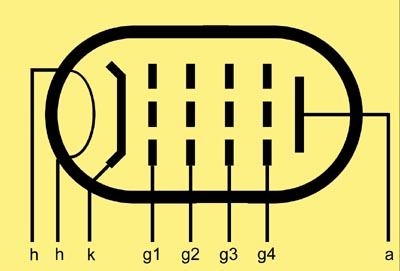|

The hexode is a mixer (frequency changer) valve that was developed after the Heptode as a more efficient device. The Hexode is normally found jointly with a Triode.
The Triode Hexode normally would have a common cathode and the valve would be designed for frequency changing. The triode forming the local oscillator and typically the triode grid would be connected internally to grid three of the hexode. The hexode control grid would have the signal coupled into it and grids two and four would act as screen grids and probably be connected. As in RF mixer service the anode load would be a resonant tuned circuit a suppressor grid would not be needed as any kink in the curve would be irrelevant. The mixer being a non linear device and the suppressor grid would exist for the purpose of achieving linearity.
Having a separate local oscillator meant that the hexode could be made of variable μ construction and AGC could be applied to the mixer without upsetting the oscillator operating conditions or stability. Also with a separate oscillator the problem of strong signals 'pulling' the oscillator was greatly diminished.
The first Triode Hexode valves appeared in the UK in 1934 with the Lissen FC2.
|